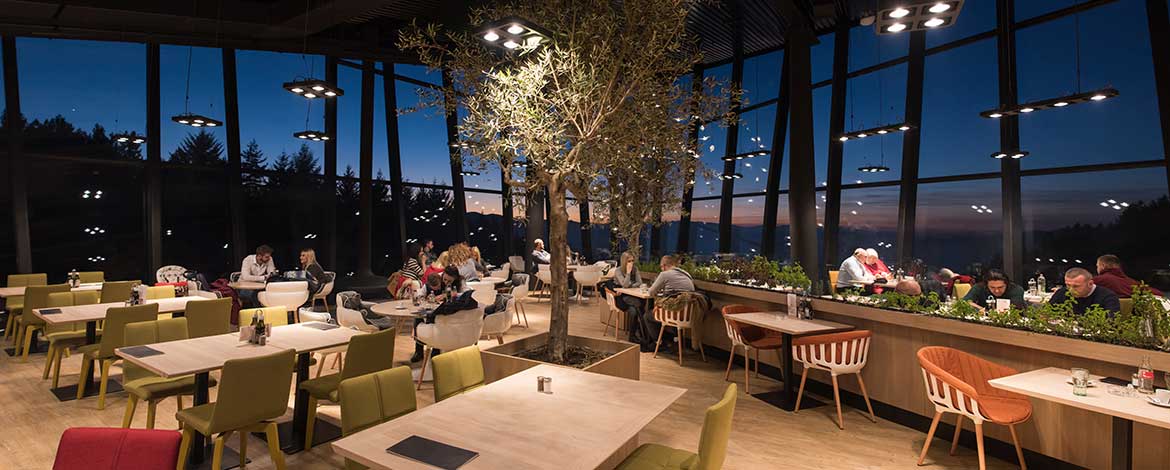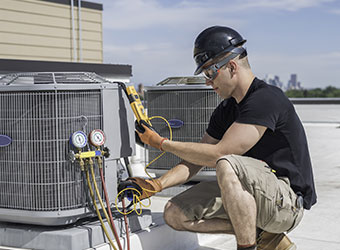As on-premise dining reopens across the country, restaurant operators continue to adapt their safety procedures to protect guests dining indoors. Restaurants are taking indoor air quality more seriously and taking a proactive approach to disease prevention through ensuring cleaner, safer, more efficient ventilation systems by implementing a variety of indoor air quality best practices.
What is Indoor Air Quality (IAQ)?
Indoor air quality is the air quality within and around buildings and structures. IAQ is known to affect the health, comfort, and well-being of building occupants.
To help guests feel comfortable with indoor dining, restaurant operators can follow CDC, EPA and ASHRAE recommendations for maintaining good restaurant ventilation to reduce indoor airborne transmission of COVID-19. A combination of air cleaners, HVAC filters and IAQ best practices are recommended.
To assist you in your reopening strategy, we’ve compiled a checklist of Indoor Air Quality Best Practices:
HVAC and Air Circulation
• Conduct preventive maintenance on HVAC systems to ensure they are fully operational, especially if the restaurant was closed or operating at a lower capacity.
• Run the HVAC system at maximum outside airflow for 2 hours before and after occupied times.
• Open outdoor air dampers beyond minimum settings to reduce or eliminate HVAC air recirculation.
• Increase circulation of outdoor air as much as possible by opening windows and doors. Use caution in highly polluted areas.
• Use fans to increase the effectiveness of open windows. Avoid placing fans that could cause contaminated air to flow directly from one person to another. Window fans help draw in fresh air without generating strong room air currents.
• Disable demand-controlled ventilation (DCV) controls that reduce air supply based on occupancy or temperature during occupied hours.
• Don’t let HVAC air intakes or open windows pull exhaust air back into the building.
• Set the fan to the “on” position instead of “auto.”
• Keep relative humidity between 40% to 60%.
• Between occupancies, flush the space with three times the amount of fresh air.
Air Filters
• Wear N95 respirators, eye protection (safety glasses, goggles or face shields), and disposable gloves when changing filters.
• Upgrade air filters to MERV-13 or higher.
• Check filters to ensure they are within service life.
• Inspect filter housing and racks to ensure appropriate filter fit and check for ways to minimize filter bypass.
• Use the bag in/bag out air filter replacement method when replacing air filters to mitigate exposure.
Exhaust Fans
• Ensure restroom exhaust fans are working at maximum capacity and are set to stay on.
• Inspect and maintain local exhaust ventilation in areas cooking areas. Operate these systems when these spaces are occupied. Consider operating these systems even when the space is not occupied to increase overall ventilation.
• Generate clean-to-less-clean air movement by re-evaluating the positioning of supply and exhaust air diffusers and/or dampers (especially in higher-risk areas).
Restroom Air
• Keep restroom doors closed, even when not in use.
• Vent separately where possible.
• Keep bathroom windows closed if open windows could lead to re-entrainment of air into other parts of the building.
Products to Consider
• UV-C products
- LEDs
- In-duct air disinfection systems
- Portable room decontamination systems
- Ultraviolet germicidal irradiation (UVGI) systems
- Upper-room UVGI systems provide air cleaning within occupied spaces
- In-duct UVGI systems provide air cleaning inside central ventilation systems
• Bi-polar ionization air purifiers such as Nu-Calgon’s iWave technology
• Portable HEPA fan/filtration systems to help enhance air cleaning
When in doubt, decrease occupancy in areas where outdoor ventilation cannot be increased. Interested in improving Indoor Quality for your business? Contact Erich Munzner at emunzner@ecotech-hvacr.com.
Erich Munzner is the VP of Business Development at Ecotech Refrigeration & HVAC.
Source:
The American Society of Heating, Refrigerating and Air-Conditioning Engineers
National Restaurant Association, COVID-19 Operating Guidance



